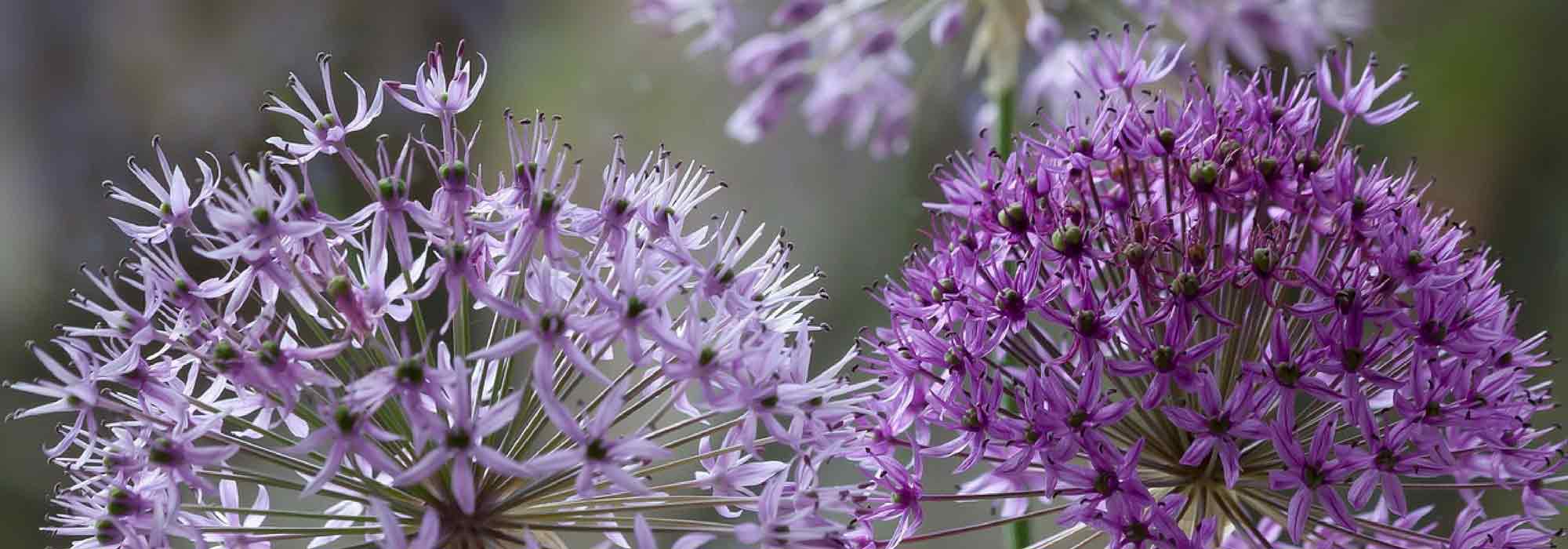
Allium, ornamental garlic: which varieties to choose?
Our tips
Contents
There are over 700 species of alliums, some of which are edible, such as garlic (including the well-known Allium ursinum or wild garlic), onion (Allium cepa), and chives (Allium schoenoprasum). From Allium giganteum to Allium gladiator, not to mention Allium ‘Purple sensation’ or the yellow Allium molly, it can be challenging to choose from all these bulbs available for purchase.
Ornamental garlics are classified by their height, into tall and short species. There are alliums that grow tall and others that are very low, forming a ground cover. The tallest alliums can easily reach heights of 0.80 m to 1.50 m, intermediate alliums grow between 0.45 m and 0.75 m, while the smaller species do not exceed 40 cm.
They are also distinguished by the shape of their flowers, ranging from XXL globes, small pom-poms to loose umbels, with diameters varying from gigantic (30 cm) to miniature (5 cm).
Choosing an allium therefore depends on its height, colour, and flower size, as well as the intended location: grouped in beds, in rockeries, along borders, or in pots. Alliums also make spectacular cut flowers for both dried and fresh bouquets.
From the allium with the largest flower to the tallest and the most unusual, discover how to make the right choice from our beautiful collection of alliums, including some rare or exclusive varieties.
A choice of size: giant flowers or mini pom-poms?
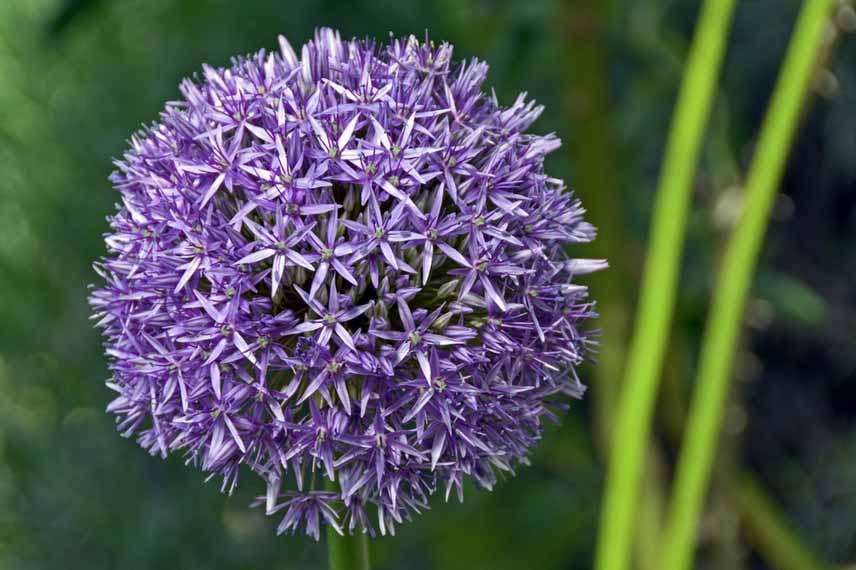
Alliums are distinguished by the size of their inflorescences, ranging from gigantic to miniature. Here is Allium ‘Globemaster’.
- The giant globes measuring 15 cm to 20 cm in diameter: they bear ball-shaped flowers blooming on sturdy stems, adding significant relief to the garden. With their spectacular spheres, they are widely used in the background of flower beds where their very large, well-formed flowers create an interesting focal point and are particularly structuring. These intensely graphic spherical flowers are highly valued for creating fresh or dried bouquets and enlivening flower beds with their dried silhouettes well into the season.
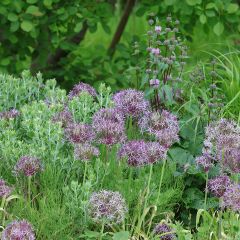
Allium cristophii
- Flowering time June, July
- Height at maturity 50 cm

Allium Pinball Wizard
- Flowering time June, July
- Height at maturity 70 cm

Allium Globemaster
- Flowering time June, July
- Height at maturity 90 cm
- Small alliums (5 to 10 cm in diameter): With their small round heads suspended on fine stems, they add relief and an airy effect to the contemporary garden. They can grow up to 80 cm in height and provide just as much originality to the garden as the large alliums. They can be cultivated in the ground in flower beds, borders, as solitary plants, or in pots for balconies and terraces, as well as in bouquets.
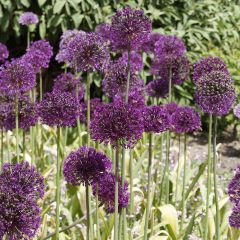
Allium aflatunense Purple Sensation
- Flowering time June, July
- Height at maturity 90 cm
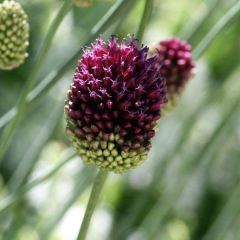
Allium sphaerocephalon
- Flowering time July, August
- Height at maturity 70 cm
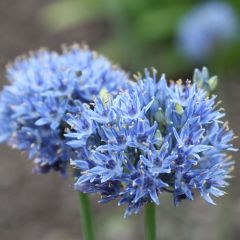
Allium caeruleum
- Flowering time June, July
- Height at maturity 80 cm
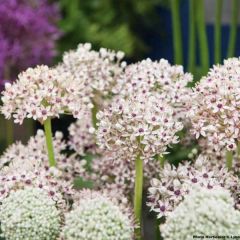
Allium multibulbosum Silver Spring
- Flowering time June, July
- Height at maturity 60 cm
Read also
Planting alliumsHigh or low growing
In the large family of Alliums, two types are distinguished : the tall species (from 0.80 m to 1.50 m in height), medium (from 0.45 to 0.75 m) and short (0.20 to 0.40 m). The tall species bloom in large spherical umbels, while the short species mostly have loose umbels.
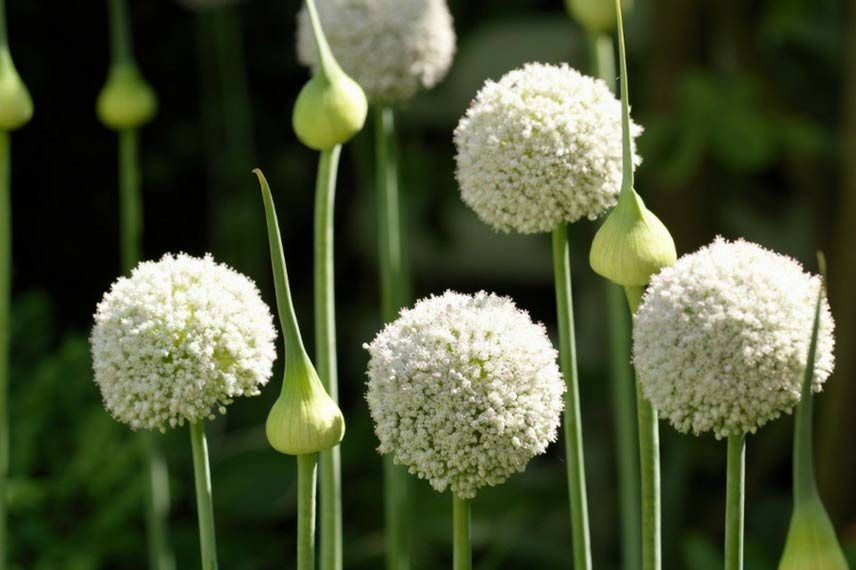
The full white spheres of Allium ‘White Cloud’ are held over 1.50 m high
The tall ones to structure the flowerbeds
The Giants whose stems can reach 1.50 m such as Allium Gladiator, Allium Giganteum or Allium cristophii, will structure and add height to the flowerbeds. Their tall silhouettes and their very structural star-shaped heads also balance the volumes in more orderly flowerbeds and will bring, even once their stems have faded, an airy feel. They create in the background from late spring to autumn, graphic and colourful scenes in mixed borders, naturalistic or contemporary flowerbeds to which they add striking verticality, relief and whimsy.
While most are not afraid of rain or wind, sometimes they may need staking to prevent their stems from breaking.
Our favourites
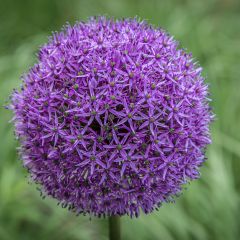
Allium Gladiator
- Flowering time July, August
- Height at maturity 1,50 m
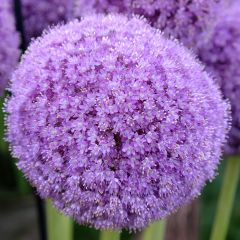
Allium giganteum
- Flowering time July, August
- Height at maturity 1,50 m
The small alliums: stars of the borders and pots
The low alliums such as Allium karataviense and Allium sikkimense will be perfect for small flowerbeds, borders, rockeries, pots. They form ground-covering bushes and offer an abundance of flowers in often loose umbels in a wide variety of colours.
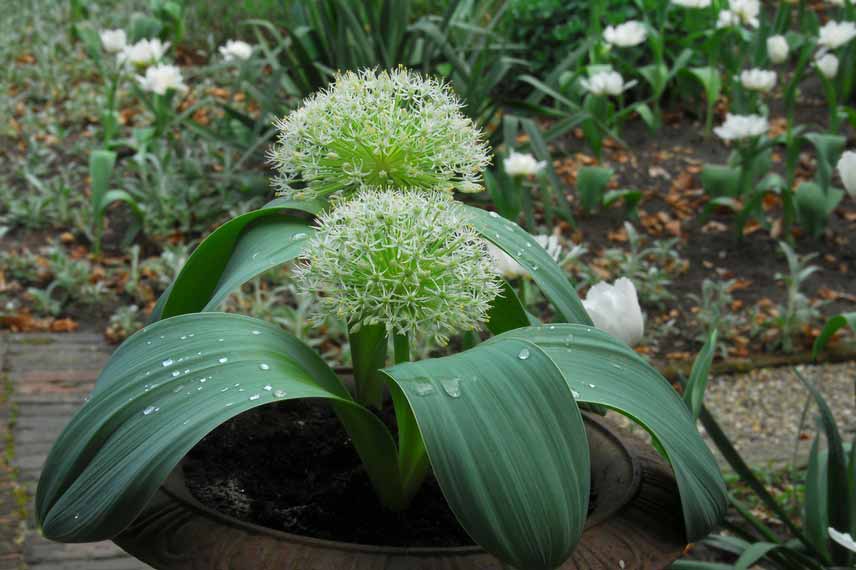 Allium karataviense ‘Ivory Queen’ bears white flowers above beautiful blue-tinged foliage[/caption>
Allium karataviense ‘Ivory Queen’ bears white flowers above beautiful blue-tinged foliage[/caption>
Discover other Allium
View all →Available in 2 sizes
Available in 0 sizes
Available in 1 sizes
Available in 0 sizes
Available in 2 sizes
Available in 1 sizes
Available in 1 sizes
Available in 1 sizes
Available in 2 sizes
The earliest
If most alliums bloom in late spring between May and June, the flowers of some earliest varieties appear as early as March at the top of their slender stems. They bloom until May.
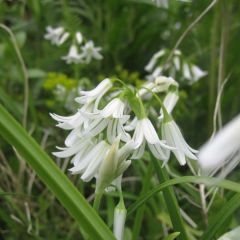
Allium triquetrum
- Flowering time April to June
- Height at maturity 35 cm
Read also
Allium: 9 successful pairing ideasThe latest
Some rare alliums have the advantage of flowering in mid-summer rather than late spring. They extend the season of ornamental garlic. In July-August, umbels of flowers borne on sturdy stems appear to brighten up borders and rockeries. Here are the latest flowering decorative garlics.

Allium giganteum
- Flowering time July, August
- Height at maturity 1,50 m
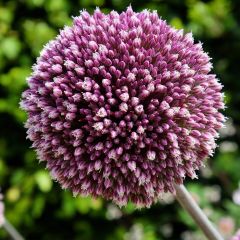
Allium Summer Drummer
- Flowering time August, September
- Height at maturity 1,20 m
The best alliums for dried bouquets
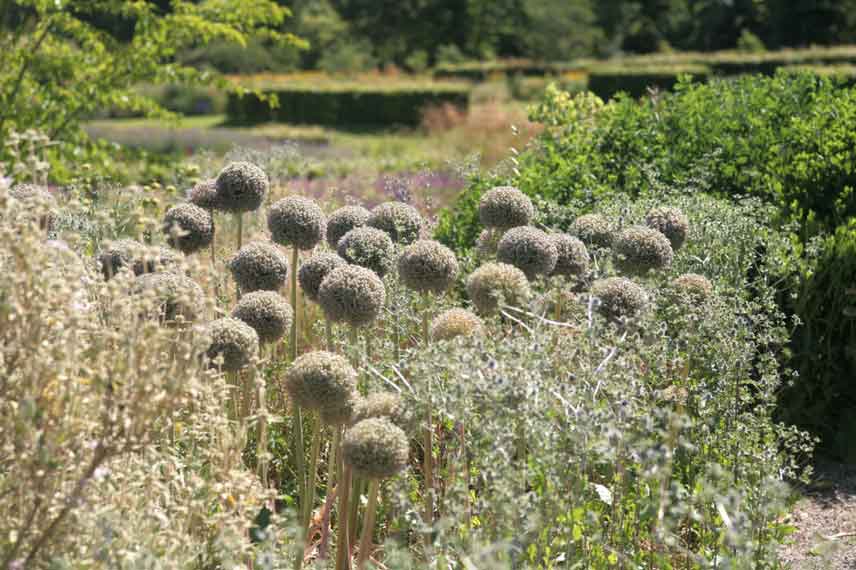
Tall species are to be preferred: here, the deflowered stems of Allium ‘Ambassador’ remain decorative until autumn
The flowering of alliums lasts nearly 6 weeks. In summer, the pollinated flowers dry on the stem and transform into particularly graphic dry inflorescences. They then take on beautiful parchment-like hues that extend the decorative effect in the garden for at least another 3 months.
Our favourites

Allium Ambassador
- Flowering time July
- Height at maturity 1 m
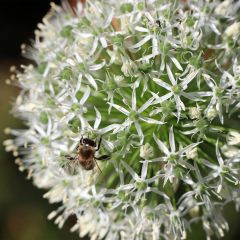
Allium stipitatum Mount Everest
- Flowering time June, July
- Height at maturity 1 m
Discover our advice sheet to learn how to dry Allium flowers.
The most unusual alliums
The shape of Allium flowers varies depending on the species, ranging from large, spectacular globes to more airy or… strange umbels! Some flowers exhibit a spider-like pattern, while in others, the umbels are curiously topped with an upright tuft or display a villous flowering.
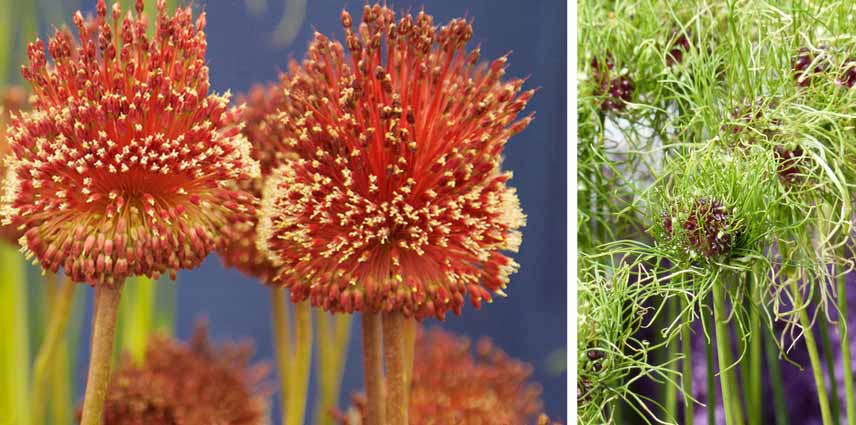
‘Red Mohican’ and ‘Hair’ alliums are among the strangest
Our favourites
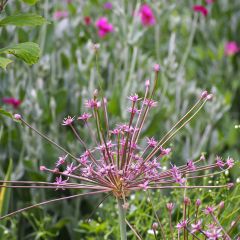
Allium schubertii
- Flowering time July, August
- Height at maturity 50 cm
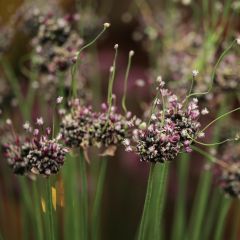
Allium scorodoprasum Bizarre
- Flowering time July, August
- Height at maturity 1,10 m
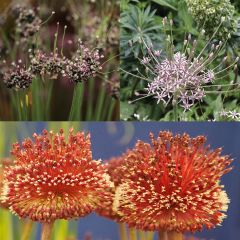
Collection of 10 Unique Alliums
- Flowering time July, August
- Height at maturity 60 cm
Naturalising alliums
Year after year, these allium bulbs return faithfully, ever more beautiful and floriferous. When well planted, they naturalise easily.
Our favourites to naturalise
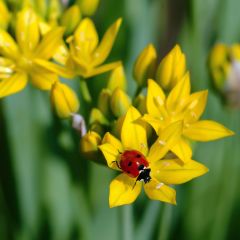
Allium moly
- Flowering time July, August
- Height at maturity 30 cm
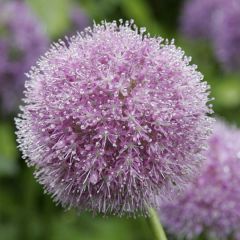
Allium macleanii
- Flowering time June, July
- Height at maturity 80 cm
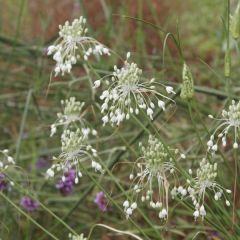
Allium carinatum subsp. pulchellum Album
- Flowering time August, September
- Height at maturity 50 cm
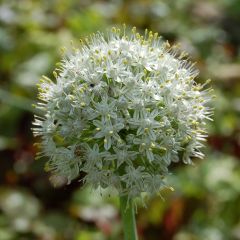
Allium stipitatum Album
- Flowering time June, July
- Height at maturity 1,20 m
Wild garlic: a unique allium
If its leaves possess the characteristic garlic smell of the allium family, Allium ursinum or wild garlic is a special case. Unlike its relatives, it is one of the few alliums that prefers the dappled shade of a woodland to full sun and moist soil to rather stony ground.
It is also one of the earliest; its starry white umbels, reaching heights of 30 to 35 cm, appear in March-April, right at the end of winter. It forms large clumps of leaves that create exceptional scenes in the undergrowth.
Wild garlic is a medicinal plant that can be consumed entirely, from bulb to leaves, which can be enjoyed raw in salads, but it will also find its place in shaded ornamental beds as well as in the vegetable garden.
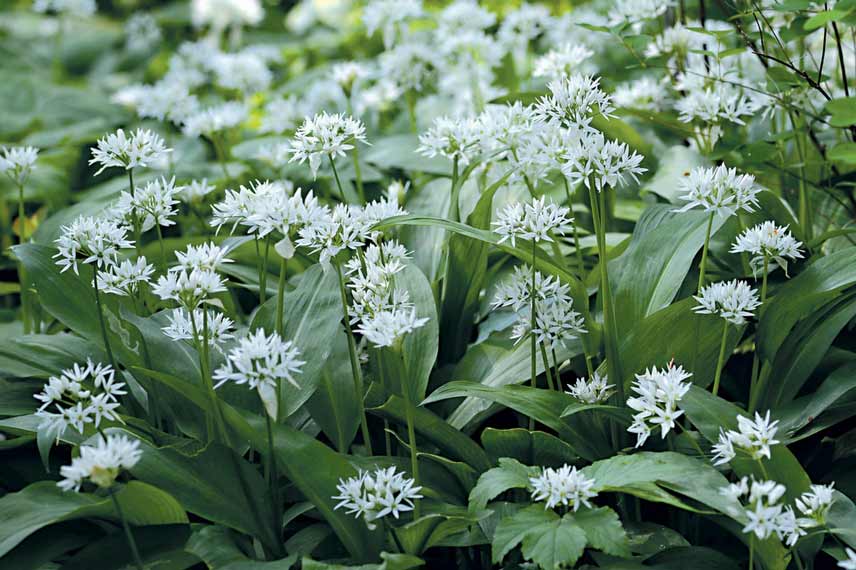
Allium ursinum or wild garlic, as decorative as it is tasty
Alliums in the kitchen?
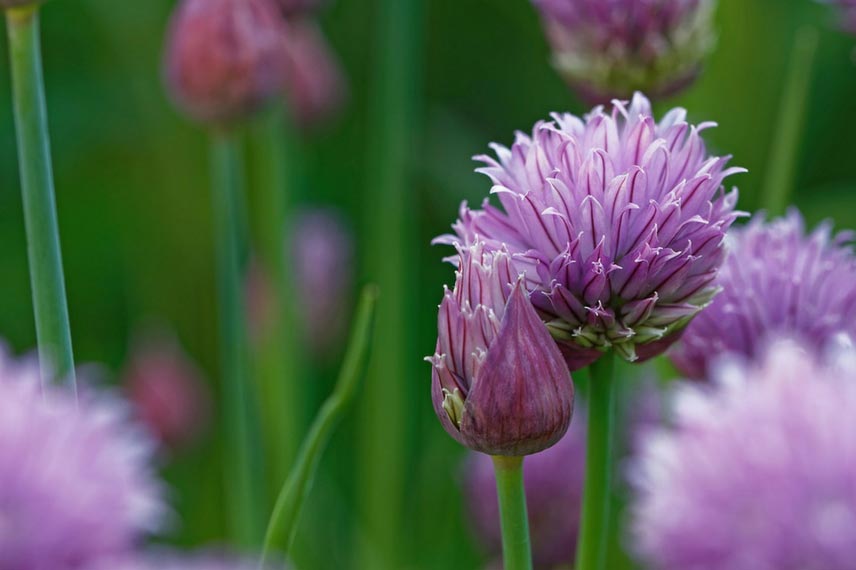
Chives or Allium schoenoprasum is one of the ideal “fine herbs” to enhance salads, omelettes, or fresh cheeses with its alliaceous note.
Alliums are incredibly graphic bulbous plants with strong decorative potential. An appearance that tends to overshadow the fact that the genus Allium includes some edible and culinary species such as cultivated garlic, (Allium sativum), wild garlic (Allium ursinum), onion (Allium cepa), shallot, chives (Allium schoenoprasum), and leek!
Among them, the famous chives, an aromatic and culinary plant grown in the vegetable garden or in pots for its long hollow leaves with a powerful garlic flavour highly appreciated in cooking. It flourishes from March to May, producing lovely decorative pure white or mauve pom-poms.
- Subscribe!
- Contents
































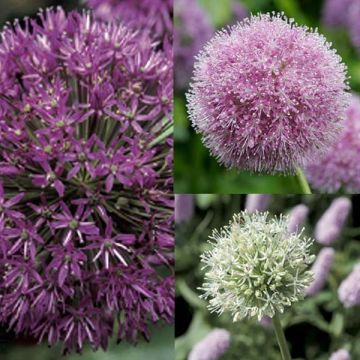
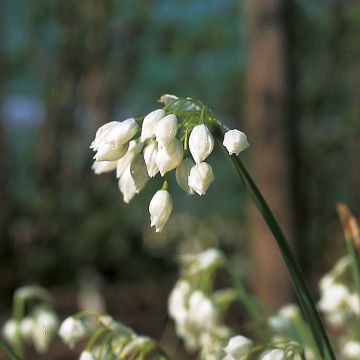


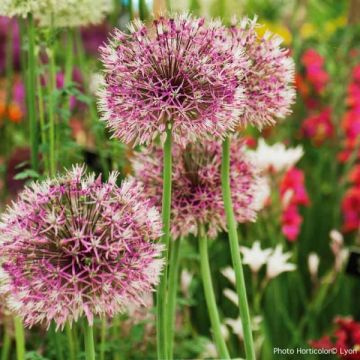
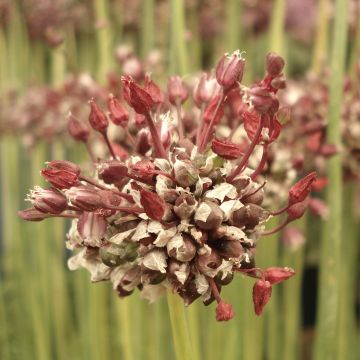
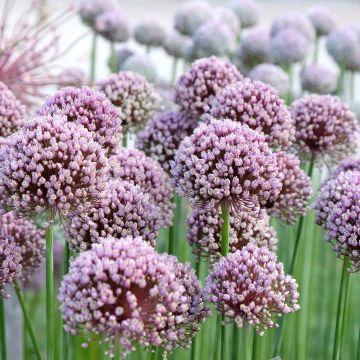

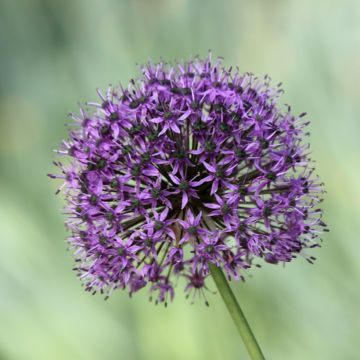
Comments